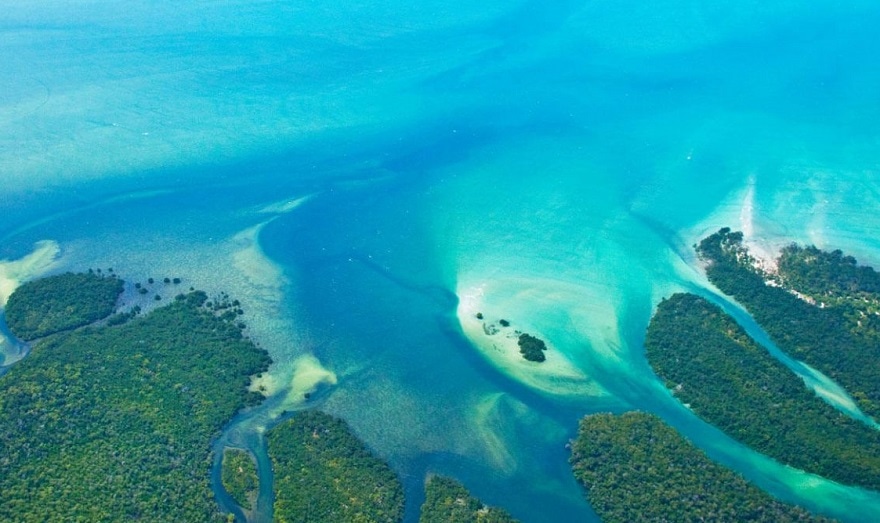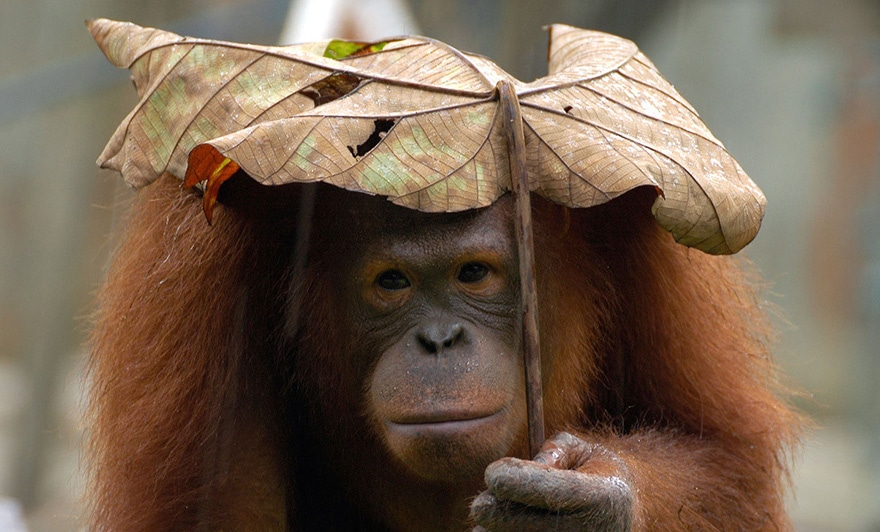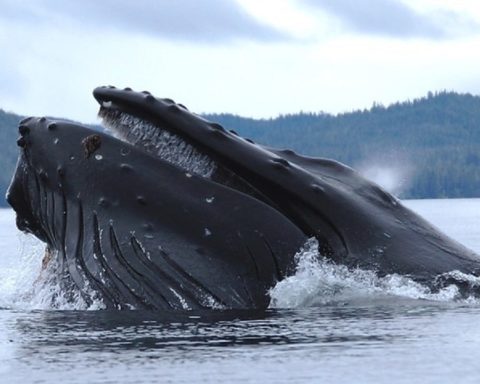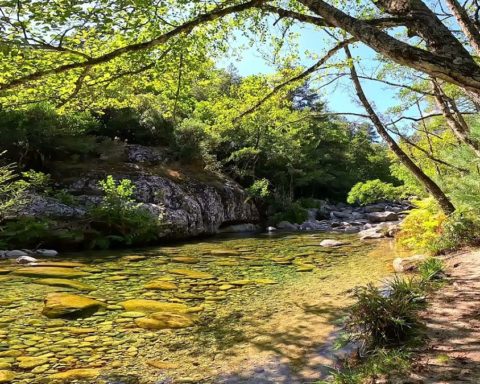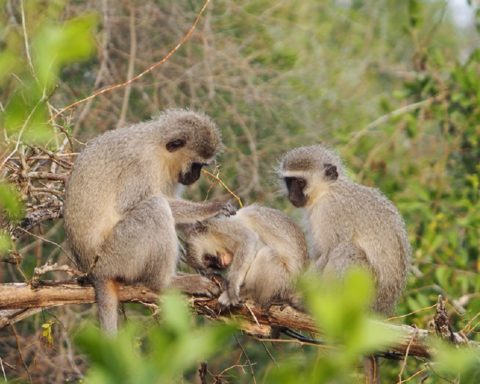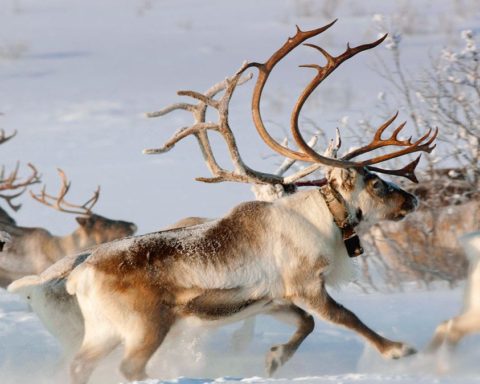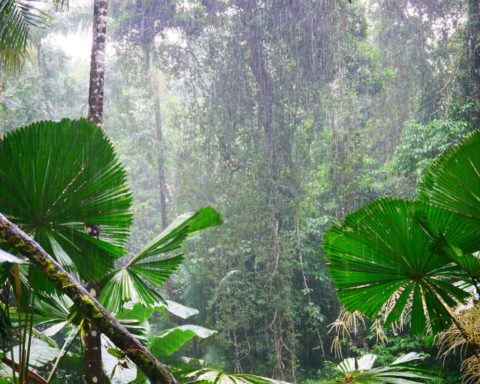The International Coordinating Council of UNESCO's Man and the Biosphere Programme, meeting in Palembang (Indonesia) from 23 to 28 July, added 24 new sites to the World Network of Biosphere Reserves. As "Supporting Sites for Science for Sustainability", these special sites test innovative interdisciplinary approaches to understanding and managing changes and interactions between social and ecological systems, including conflict prevention and biodiversity management.
Aiosphere reserves are sites where innovative ideas related to sustainable development are tested and implemented. They combine scientific knowledge with governance approaches aimed at reducing biodiversity loss, improving people's livelihoods, and fostering the social, economic and cultural conditions essential for sustainable development.
The conservation of biodiversity and the management of natural resources in these exceptional ecosystems are prerequisites for sustainable development. These sites are laboratories for harmonious interaction between man and nature, advancing scientific and indigenous knowledge, facilitating knowledge sharing, promoting the science-society interface, and fostering ways in which science can provide concrete solutions in the daily lives of local populations. »Audrey Azoulay, Director-General of UNESCO
Biosphere Reserves are sites designed to reconcile biodiversity conservation and human activities through the sustainable use of natural resources. One of the objectives is to develop innovative sustainable development practices. The World Network of Biosphere Reserves is a network of 686 sites in 122 countries, including 20 transboundary sites. It encourages North-South and South-South cooperation; it is an exceptional tool for international cooperation, enabling the sharing of knowledge, exchanges of experience, capacity building and highlighting good practices. It thus promotes the harmonious integration of people and nature for sustainable development, thus contributing to the Millennium Development Goals through dialogue, knowledge sharing, poverty reduction and improvement of human well-being, respect for cultural values and society's capacity to adapt to change. The network is therefore one of the main international tools that addresses the development and implementation of sustainable development approaches in a variety of contexts.
New reserves are designated annually by the International Programme Coordinating Board composed of elected representatives of 34 Member States of UNESCO. UNESCO's Man and the Biosphere Programme is an intergovernmental scientific programme aimed at improving the relationship between man and his natural environment.
For the first time, a biosphere reserve was designated in the Republic of Moldova and Mozambique. In addition, five sites in Australia, one site in the United States and another in the Netherlands were withdrawn from the World Network of Biosphere Reserves at the request of the States concerned. For Australia, these are the Wilson Promontory, Hattah Kulkyne and Murray Kulkyne, Yathong, Barkindji and Prince Regent Biosphere Reserves. For the Netherlands it is the Wadden Sea Biosphere Reserve, for the United States it is the San Dimas Experimental Forest Biosphere Reserve.
The new biosphere reserves are (in alphabetical order of countries) :
Marico (South Africa) - Located in the north of the country, this biosphere reserve is made up of a unique freshwater ecosystem that includes the Molemane, Molopo and Marico river systems. This ecosystem is characterized by wetlands and a dolomitic system, which represents an important part of South Africa's natural heritage. The savannah and grazing areas are home to vulnerable plant species Searsia maricoana. The endemic fauna includes 73 species of mammals such as the African elephant, black rhino and lion. The main economic activities are food agriculture, livestock, game exploitation and tourism.
Arly (Burkina Faso) - Situated in the savannah of West Africa, this biosphere reserve presents a wide variety of landscapes determined by the relief: swamps, gallery forests, open forests and savannah of shrubs and trees. These habitats are home to vulnerable and endangered species such as cheetah, elephant, lion, leopard and vulture. Cereal (millet and sorghum), groundnut, cotton and livestock farming are the main economic activities in the region.
Mount Huangshan (China) - Located in southeast China, in the rolling Nanling mountain range, this biosphere reserve, inscribed on the World Heritage List in 1990, is home to a forest ecosystem that has remained almost intact since the last ice age. Mount Huangshan served as a refuge for many ancient animal and plant species following the Quaternary Ice Age. The site thus constitutes an important bank of genetic material and a hotspot of animal and plant biodiversity. This biosphere reserve is also an important source of water for the Xin'An, Qing Yi and Qiupu river systems.
Mount Kumgang (Democratic People's Republic of Korea) - The biosphere reserve is located in the middle of the great Mount Paektu range in the south-east of the country and includes marine areas in the east. Mount Kumgang is home to a forest ecosystem linked to coastal, agricultural and freshwater ecosystems and many endemic and rare species of global importance. The coastal zone and natural lakes provide habitat for migratory birds on the Asia-Australasia Flyway. Fishing, agriculture and forestry are the main economic activities on the site.
Suncheon Biosphere Reserve (Republic of Korea) - Located at the southern tip of the Korean peninsula, it includes the terrestrial ecosystems surrounding the town of Suncheon (Mount Mohusan and Mount Jogyesan) as well as the coastal wetland ecosystems of Suncheonman Bay. The site is rich in biological resources, including crustaceans, fish, shellfish, medicinal herbs, reed communities (Phragmites communis) and halophilic (salt-loving) plants, such as Suaeda japonica. The inhabitants - rural villagers, fishermen and mountain people - use ecosystem services for economic activities such as growing rice, medicinal herbs and fruits such as plums and persimmons.
Chocó Andino de Pichincha (Ecuador) - Located in the northwestern part of Ecuador, in the province of Pichincha, this biosphere reserve ranges in altitude from 360 to 4480 meters. It encompasses the Chocó-Darien rainforest. The region is considered a biodiversity hotspot that is home to some 270 species of mammals, including the spectacled bear, the Ecuadorian mantled howler monkey, the pacarana, as well as endemic species such as the Chóco toucan and the Pichincha rocket frog. The approximately 880,000 inhabitants living in the biosphere reserve derive a large part of their income from fruit and vegetable production and sugar cane, fish farming, animal husbandry and retail trade.
Ponga (Spain) - This remote area of mountains and sparsely populated forests is located on the northern slopes of the Cantabrian mountain range in southern Asturias. The region is known for its steep terrain, with altitudes ranging from 213 to 2142 metres above sea level. The deep green valleys climb to dizzying peaks. The vegetation consists of huge birch and mixed forests with species such as sycamore, alder, ash, chestnut, oak and hazel. The region is home to many animal species, many of which are endangered, including brown bear, capercaillie, grey wolf and golden eagle.
Wadi Wurayah (United Arab Emirates) - Located in the Emirate of Fujairah, this biosphere reserve is a watershed area in an arid climate that is part of the Hajar Mountains chain. The site is home to fauna and flora endemic to the Arabian Peninsula. It is one of the last places in the Emirates to have preserved traditional agricultural practices.
Khangchendzonga (India) - Located in the state of Sikkim, bordering Nepal in the west and Tibet (China) in the northwest, this biosphere reserve is home to one of the highest ecosystems in the world, with altitudes ranging from 1220 to 8586 meters above sea level. It is one of the world's 34 biodiversity hotspots. It includes vast natural forests with a diversity characterized by a high rate of endemism. The main economic activities are agriculture and horticulture, animal husbandry, fish farming, dairy production and poultry farming.
Berbak-Sembilang (Indonesia) - Located on the south-east coast of Sumatra, this biosphere reserve includes the Berbak and Sembilang national parks and two wildlife reserves. It is home to intact ecosystems of peat swamp and freshwater swamp forests, mangroves and lowland forests that extend along riverbanks with swamps up to 10 metres deep. The exploitation of oil palm, rubber, traditional agriculture (rice fields, dry crops...) and forestry are the main economic activities practiced.
Rinjani-Lombok (Indonesia) - The biosphere reserve includes the island of Lombok and is part of the Lesser Sunda Islands. It is composed of relatively flat coastal areas and hilly and mountainous areas. The highest point is Mount Rinjani, the second highest volcano in Indonesia (3726 metres above sea level). It is home to a very rich biodiversity consisting of different types of forest vegetation (wooded savannah, mountainous and lowland tropical rainforest) of which about 40% are primary forests. Horticultural (vegetables and fruits) and cereal (rice) production, animal husbandry (cattle, goats, poultry) and coffee and cocoa cultivation are the main sources of income for the inhabitants.
Betung Kerihun Danau Sentarum Kapuas Hulu (Indonesia) - Located at the eastern end of Kalimantan Barat province, on the island of Borneo, this biosphere reserve includes two national parks: Betung Kerihun and Danau Sentarum. It is characterized by unique ecosystems of tropical rainforests, plains and mountains that are home to a great diversity of flora and fauna.
Kopet-Dag (Islamic Republic of Iran) - The biosphere reserve covers part of the Kopet-Dag mountain range along the border between the Islamic Republic of Iran and Turkmenistan. The Kopet-Dag ecological region is a major component of the Iranian-Anatolian biodiversity hotspot, whose main function is the conservation of many endangered species in this area. The main economic activities are agriculture and animal husbandry.
Mount Peglia (Italy) - Located in the centre of Italy, the site is at the crossroads of two river systems, the Tiber in the east and the Paglia in the west. It is composed of a vast forested area and is an important natural reservoir of fauna, flora and mushroom species in and around this ancient extinct volcano. These natural resources allow the conduct of activities compatible with sustainable development.
Val Camonica - Alto Sebino (Italy) - The site is located in the eastern part of Lombardy. The region is characterized by typical Alpine and pre-Alpine valleys, ranging from valley bottom landscapes to the highest peaks in Europe and the Adamello glacier, up to Lake Iseo, one of the largest basins in Italy. There are rivers and lakes, woods and forests, glaciers, meadows and pastures. The region has ancestral traditions related to agriculture and livestock farming.
Sharyn Biosphere Reserve (Republic of Kazakhstan) - Situated in the Ili Mountain Basin in south-east Kazakhstan, this biosphere reserve encompasses the incised valley of the Sharyn River and its relict forest of ash trees, deserts and steppes typical of Central Asia. The floristic diversity includes some 1,000 species of higher vascular plants. The fauna is rich and varied. While agriculture has long been the main economic activity in the region, tourism has been developing for several years, as well as livestock breeding and horticulture.
Zhongar Biosphere Reserve (Republic of Kazakhstan) - Located on the northern slope of the Zhetysu Alataun Massif, this biosphere reserve includes the full range of mountain ecosystems characteristic of the Tien Shan and Central Asian mountains. This area is of global importance as it is home to the wild apple gene bank. The main economic sectors are agriculture and the industrial production of sunflower oil, flour and spring water. The land is mainly used as pasture and hay meadows.
Tsmimanampesotse - Nosy Ve Androka (Madagascar)- Located in the southwest of the country, this biosphere reserve is a mosaic of terrestrial, coastal and marine ecosystems and is considered a biodiversity hotspot because it includes fragile ecosystems such as coral reefs, coasts, dunes, sea marshes, mangroves and coastal forest. The terrestrial part has a small number of flora and fauna species but an endemism rate of up to 90%. The main economic activities in the area are agriculture, livestock breeding and fishing.
Lower Prout (Republic of Moldova) - Located in the south of the country, this biosphere reserve includes the Prout River and floodplain lakes. Two-thirds of the site is occupied by Beleu Lake. A wetland area, extending along the left bank of the Prout River, supports a mosaic of aquatic ecosystems, grasslands and forests. The main economic activity is agriculture, which provides 90% of the local population's income.
Quirimbas (Mozambique) - Located in the northern province of Cabo Delgado, the site consists of 11 islands, a combination of marine parks and a freshwater system including the Montepuez River and Lake Bilibiza, a bird sanctuary. There are 3,000 floral species, 1,000 of which are endemic, and a rich fauna including 23 species of reptiles, 447 species of birds and 46 species of terrestrial mammals including four of the 'Big Five' (elephant, lion, buffalo and leopard) as well as eight species of marine mammals including whales and dolphins. The main economic activities in the area are fishing, livestock farming, tourism, handicrafts and shipping.
Maasheggen (Netherlands) - This agricultural river landscape in the Meuse valley in the south-east of the Netherlands has been shaped by the constant interaction between people and nature. The site, used for the production of fodder for livestock, contains the largest and oldest network of natural hedgerows in the Netherlands. The landscape consists of a mosaic of small agricultural areas surrounded by hedgerows, sand dunes, forests, lakes, wet meadows and reed beds. The aim is to make this biosphere reserve a place to experiment with sustainable development and tourism.
Ural Mountains (Russian Federation) - Situated in the southern Urals, this biosphere reserve is covered by mixed forests of conifers and broad-leaved trees as well as forests of spruce and fir from the mountainous taiga. The mountain ranges (with peaks ranging from 800 to 1,178 m) and valleys are connected by rocky rivers. The western part of the reserve is low elevation, while the eastern part alternates fairly steep ridges with depressions covered with lakes and deeply incised swampy valleys. The site, which has a population of about 12,000, plans to move from mining to a development model based on sustainable natural resource management, tourism and rehabilitation of degraded landscapes after the exhaustion of the mines.
The river Mura (Slovenia) - Located in the east of the country, this biosphere reserve includes the largest preserved floodplain complex in Slovenia, where the interweaving of natural factors and human presence has created an outstanding cultural river landscape. The main sources of income for the inhabitants are agriculture, industry, forestry and tourism.
Gombe Masito Ugalla (United Republic of Tanzania) - This biosphere reserve, which is a major site for chimpanzee research, includes Gombe National Park, forest reserves and part of Lake Tanganyika. Animal species found in the area include African elephants, horned frogs and eight species of primates. Plant species include one species discovered in Gombe and named after it (Pleiotaxis gombensis). The biodiversity of Lake Tanganyika, the deepest lake in Africa, includes more than 300 species of fish, 250 species of birds and reptiles such as the water cobra and the Tanganyika water snake.
Extensions :
Thuringia Forest Biosphere Reserve [extension and renaming of the Vessertal-Thuringia Biosphere Reserve]. (Germany) - Designated in 1979, this biosphere reserve was extended in 1986 and 1990. With this new extension, the site now covers 34,000 ha and should enable local communities to create a model region for sustainable development.
Ticino - Val Grande Verbano Biosphere Reserve [extension and change of name of the Ticino Valley Biosphere Reserve]. (Italy) - With this extension, the wooded and semi-wooded areas of this biosphere reserve designated in 2002 now make up nearly half of the site, compared to 24% previously. The extension also increases the surface area of wetlands and water bodies by the presence of the large subalpine lakes of Insubria, notably Lake Maggiore and Lake Varese.
Header photo: Quirimbas Archipelago in Mozambique

